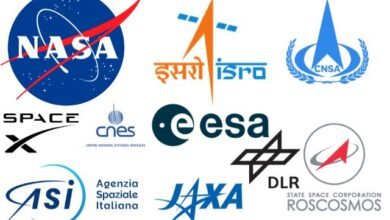Rethinking the Pluto Problem: Time for a New Definition of a Planet?
Rethinking the Pluto problem: Is it time to update our definition of a planet in light of new discoveries and ongoing debates?

What constitutes a planet was a major judgment taken by the International Astronomical Union (IAU) in 2006. Pluto was subsequently reclassified as a dwarf planet as a result, which caused controversy and uncertainty. Therefore, is it time for rethinking the Pluto problem?
We must realize that Pluto’s demotion was not wholly unexpected in order to comprehend this circumstance. A planet’s meaning was ambiguous for a long time & astronomers used the term imprecisely. Any “wandering star,” including the sun and the moon, was referred to as a “planet” in ancient Greek. The earth was categorized as a planet, moon as a satellite & the sun as a star at the time of the Copernican revolution.
This definition worked well for over 200 years until new discoveries challenged it. When William Herschel found Uranus and Giuseppe Piazzi discovered Ceres, both were initially called planets. But scientists started to reevaluate what planet was as other asteroids with orbits similar to Ceres were found. Herschel referred to smaller objects found between Mars & Jupiter as “asteroids” even though Uranus was still regarded as planet.
These rules were accepted by astronomers until 1930 when Clyde Tombaugh found Pluto. Although Pluto was called a planet, its unusual orbit and smaller size led many to question whether it fit the definition.
In the 1990s, more objects with orbits like Pluto’s were discovered. The situation became serious in 2005 when astronomer Mike Brown found Eris, which is about the same size as Pluto and orbits beyond Neptune. This prompted a crucial meeting in 2006, where astronomers at the IAU discussed how to redefine what a planet is.
During the meeting, there were two main ideas. The geophysicists believed a planet should be defined by its appearance—specifically, that it should be big enough for its gravity to shape it into a nearly round form. On the other side, dynamicists maintained that a planet’s capacity to remove junk from its orbit should be its defining characteristic.
If the geophysicists had their way, Pluto & other similar bodies would still be considered planets But final decision favored dynamists. Since Pluto does not clear its orbit—because it has many neighboring objects—it was demoted to a dwarf planet.
This ongoing debate about Pluto’s status raises important questions about how we define planets. Rethinking the Pluto problem could help us better understand our solar system and how we classify different celestial bodies.
There are a lot of arguments & divergent views since not everyone agrees with the new planet classification guidelines. One significant problem is that phrases like “nearly spherical” and “mostly clear the orbit” have ambiguous definitions that are open to interpretation.
All known planets, from Mercury to Neptune are circular because of their inherent gravity, according to proponents of the criteria. On the other hand, the majority of non-planets, such as comets and asteroids, are not round. They point out that, for instance, Mars is more than 5,000 times heavier than the next largest body and significantly larger than any other object in its orbit. There is a noticeable contrast in the behavior of these celestial bodies, as Pluto only has roughly 7% of the mass in its orbit.
The biggest source of confusion lies in the categories for non-planets. If an object is big enough to be round but not able to clear its orbit, like Pluto or Ceres, it is labeled as a “dwarf planet.” This word, though, can be deceptive. Term “dwarf” is typically used to describe lesser forms of bigger categories in other branches of astronomy such as dwarf stars or dwarf galaxies which are nevertheless classified as stars and galaxies. However, dwarf planets vary from these other “dwarf” designations in that they are specifically not categorized as planets.
Anything that is too small to be circular is classified as a “small solar system body.” Astronomers frequently use this phrase to refer to smaller bodies in inner solar system including comets even though asteroids aren’t officially classed in this manner.
In addition, there are “minor planets,” which comprise all of the small bodies in the solar system that are not comets, including dwarf planets. There are also “trans-Neptunian objects,” which include both plutoids and other tiny bodies that orbit beyond Neptune, and “plutoids,” which are dwarf planets that orbit beyond Pluto.
Complexity of our knowledge of the solar system is reflected in this classification scheme. With a wide variety of things interacting with one another, our solar system is dynamic & energetic. Since the universe itself is not well ordered, it is difficult to come up with precise definitions.
- Robotics in Space: The Essential Role of Thermal Control Systems in Ensuring Mission Success
- 10 Top Space Agencies Shaping Our Universe
- St Jude Polaris Dawn Mission Delayed Again: 3 Major Setbacks by SpaceX
- Should We Abolish Daylight Saving Time?
Even though our current definitions are not ideal, it might be best to remain with them for the time being. We can update & improve our definitions to better reflect our understanding of the universe as we continue to make discoveries and learn more.



